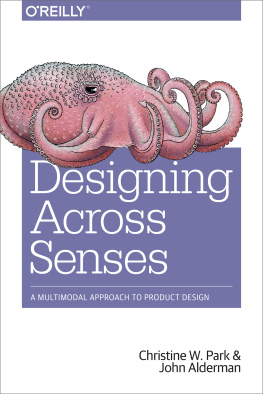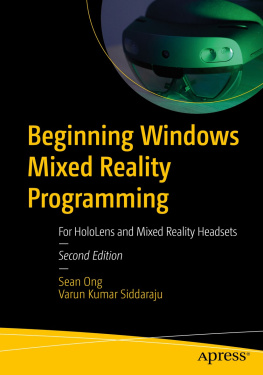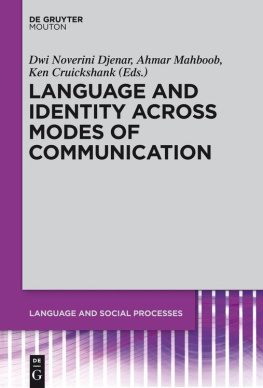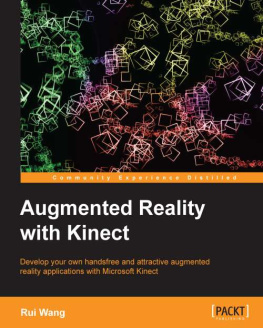Praise for Designing Across Senses
As the web becomes an overlay on our physical reality and everyday objects come alive with embedded intelligence, we must evolve new ways to interact with our technology. In this enlightening book, Park and Alderman not only demystify multimodal design to bring us closer to our machines, but they also make sense of the startling sensory experiences that keep us human.
DAVID PESCOVITZ, RESEARCH DIRECTOR, INSTITUTE FOR THE FUTURE AND CO-EDITOR, BOING BOING
John and Christine have written a UX classic that will be referenced and pulled on and off the bookshelf for years to come. This book defines and sets the stage for multimodal design and sensory experiences we are experiencing today and designing in a not too distant future.
KELLY GOTO, CEO AND FOUNDER, GOTOMEDIA
Technology is breaking away from the screen, and this is the first book that addresses how voice, virtual reality, and other upcoming interaction models should be designed. Take a moment to feel this book. When it is in your hands, youll find it insightful. When its out of your hands, youll miss it dearly.
GOLDEN KRISHNA, DESIGN STRATEGIST AND AUTHOR, THE BEST INTERFACE IS NO INTERFACE
Designing Across Senses
by Christine W. Park and John Alderman
Copyright 2018 Christine Park and John Alderman. All rights reserved.
Printed in the United States of America.
Published by OReilly Media, Inc., 1005 Gravenstein
Highway North, Sebastopol, CA 95472.
OReilly books may be purchased for educational, business, or sales promotional use. Online editions are also available for most titles ( ). For more information, contact our corporate/institutional sales department: (800) 998-9938 or corporate@oreilly.com.
Acquisitions Editor:Angela Rufino
Editor:Angela Rufino
Production Editor:Melanie Yarbrough
Proofreader:Amanda Kersey
Indexer:Lucie Haskins | Cover Designer:Randy Comer
Interior Designers:Ron Bilodeau and Monica Kamsvaag
Illustrator:Rebecca Demarest
Compositor:Melanie Yarbrough |
February 2018: First Edition.
Revision History for the First Edition:
2018-03-07 First release
See http://oreilly.com/catalog/errata.csp?isbn=0636920049500for release details.
The OReilly logo is registered trademarks of OReilly Media, Inc. Designing Across Sensesand related trade dress are trademarks of OReilly Media, Inc.
Many of the designations used by manufacturers and sellers to distinguish their products are claimed as trademarks. Where those designations appear in this book, and OReilly Media, Inc., was aware of a trademark claim, the designations have been printed in caps or initial caps.
Although the publisher and author have used reasonable care in preparing this book, the information it contains is distributed as is and without warranties of any kind. This book is not intended as legal or financial advice, and not all of the recommendations may be suitable for your situation. Professional legal and financial advisors should be consulted, as needed. Neither the publisher nor the author shall be liable for any costs, expenses, or damages resulting from use of or reliance on the information contained in this book.
978-1-491-95424-9
[LSI]
[Preface]
What Is This Book About?
F ROM THE KEYBOARD, MOUSE , and touchscreen, to voice-enabled assistants and virtual reality, we have never had more ways to interact with technology. Called modes, they allow people to enter input and receive output from their devices. These inputs and outputs are often designed together in sets to create cohesive user interfaces (UIs). These modes reflect the way our senses, cognitive functions, and motor skills also work together in sets called









